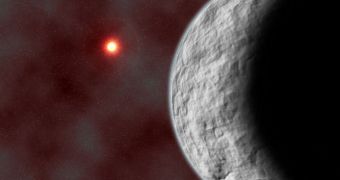By using an investigations technique called microlensing, astronomers were recently able to discover a new rocky extrasolar planet, which they say could contribute a great deal to our understanding of how the planetary formation process usually unfolds.
The newly-found object is called MOA-2009-BLG-266, and early measurements indicate that its mass is just 10 times higher than our planet's. While this does not qualify it as an Earth-analog, it does put the planet into a class more closer to our own than to that of gas giants.
This is only the 13th exoplanet to be discovered using the microlensing approach, the Extrasolar Planet Encyclopaedia reveals. The technique – a variation of gravitational lensing – allows investigators to observe objects that emit little to no light, Universe Today reports
Generally, lensing can reveal the existence of stars, clusters and gas clouds, but these features are only part of what can be found inside galaxies. Observing failed stars called brown dwarfs and exoplanets of a very low mass and no luminosity is not possible with this approach.
But microlensing can be used where other methods fail. It can be used when the object to be studied is illuminated by a star or distant quasar in the background. The process is entirely wavelength-independent, which means astronomers can analyze any kind of electromagnetic radiation.
The reason why microlensing is so important is because the other widely-used research method, called the gravitational-wobble technique, is apparently biased towards discovering large gas giants, with sizes and masses comparable to those of Jupiter and Saturn.
Years ago, astronomers realized that their knowledge of how planets formed was incomplete, in the sense that the processes which went on in our solar system were only a part of what's really going on.
When they began discovering exoplanets, Jupiter-class gas giants were the firsts to be found. But the discoveries put some dents in existing theories on planetary formation. This is why experts are now looking for rocky exoplanets.
Finding more such objects will make it a lot easier for them to determine the basic principles of this intricate process, and to discover subtleties that may have otherwise been lost on them. At this point, an important number of observatories dedicated to finding small exoplanets are coming online.

 14 DAY TRIAL //
14 DAY TRIAL //